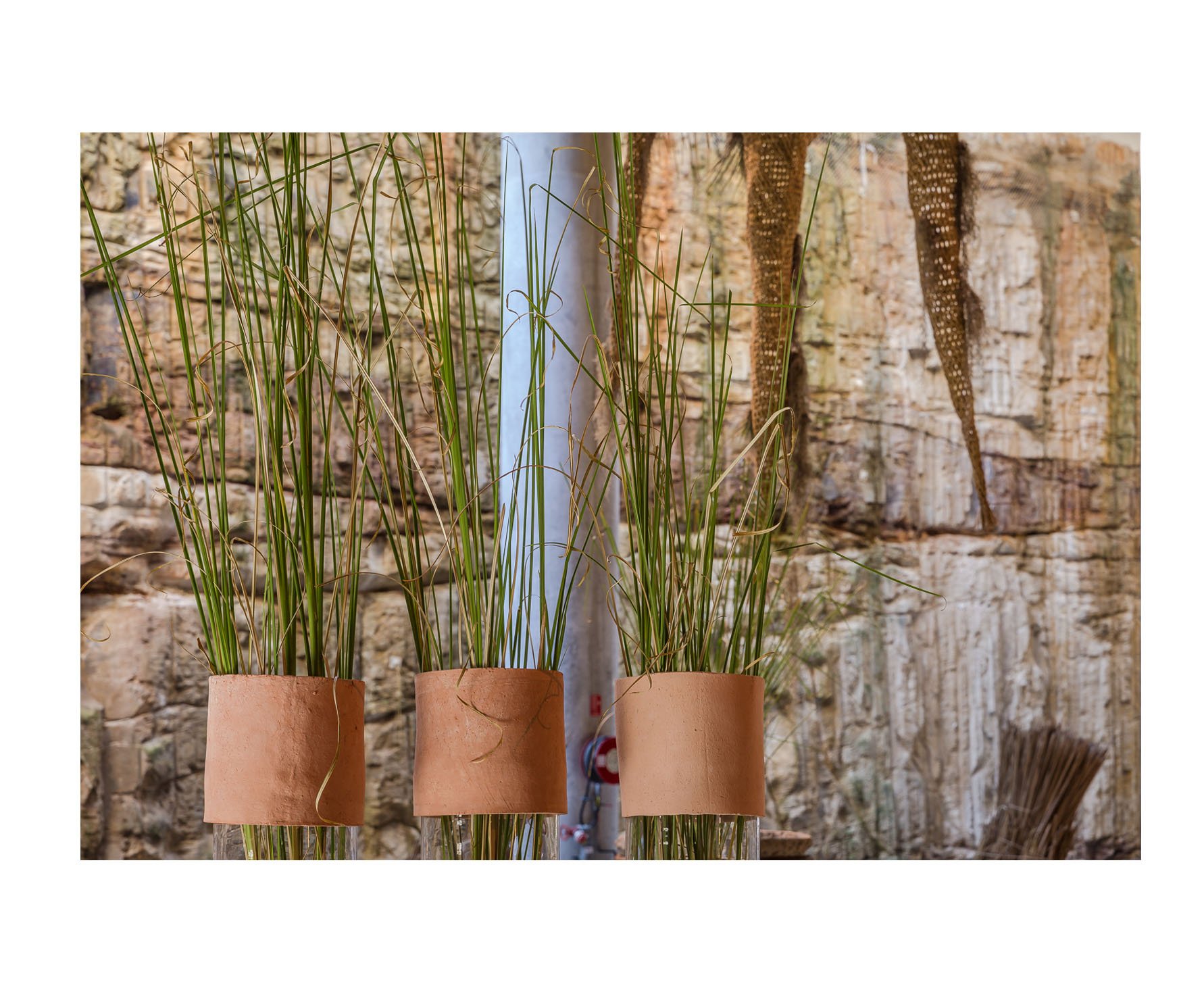Issue # 37
Ana Barboza and Rafael Freyre
Water ecosystem - 23 Biennale of Sydney
Curated by: José Roca







Ana Barboza and Rafael Freyre, Water ecosystem, 2019-2022 (detail). Courtesy the artists & Museo de Arte Contemporáneo de Lima. Installation view, 23rd Biennale of Sydney, rīvus, 2022, The Cutaway at Barangaroo. Photography: Document Photography.
Ana Barboza and Rafael Freyre explore the relation of contemporary habitat and natural environments through a practice that combines architecture, visual art and weaving. Their projects start from the observation of non-human territory in constant transformation through water, mineral, vegetal and animal forces. Their research process is focused on recognising the uniqueness of materials, organisms, ecosystems and history and searching for collaborations with local artists as well as exploring traditional techniques. The resulting artworks and installations establish new relationships between the body, nature and environments, suggesting a continuity between human and non-human as a collective weaving.
The installation Water Ecosystem celebrates the symbolic role of water in Peru’s diverse wetland ecosystems and cultural heritage. Peru’s capital, Lima, is the world’s second largest desert city and experiences seasonal extremes of water scarcity and floods. Ana Barboza and Rafael Freyre take inspiration from ancient canal systems created by pre-Colombian societies for water management which allowed for agriculture, food production and water purification in this environment using natural water treatment technologies. Through these canals water was drawn upstream to provide water security in desert coastal areas such as Lima.
The woven wetland is made of reed mats created by the Goicochea family of master weavers and the formation is based on the Lurin Wetlands located approximately thirty kilometres south of Lima. The torora and cattail fibres are plants that grow naturally along Peru’s wetlands and purify the water by absorbing organic matter.
The multisensory installation combines natural elements with traditional and contemporary technologies. Visitors are invited to walk through the wetland to experience this water ecosystem. In a time of population growth and climate change in Peru, Barboza and Freyre advocate for an integrated approach to designing and building with nature by understanding the unique qualities of the ecosystem.
“We are interested in recovering the relationship with the ecosystems of our territory, understanding their interactions and transformations. Likewise, we seek to create a ritual space with water, to restore its symbolic value within our communities and daily life. Water moves, flows and evaporates, changes constantly, like us. Through it, we can reflect and understand the cycles and transformations that we inhabit.”
Mixed media installation Courtesy the artists & Museo de Arte Contemporáneo de Lima
Ana Teresa Barboza lives and works in Lima. A graduate from the Pontifical Catholic University of Peru School of Arts, she has exhibited her work in individual shows in Lima, Miami, Taipei and Buenos Aires. She has taken part in collective exhibitions in Lima, Mar del Plata, La Paz, New York, Houston, Barcelona, Madrid and Geneva and was also part of the 15th Bienal of Cuenca, the 22th Bienal Arte Pais of Guatemala, and the 23rd Biennale of Sydney. She has taken residencies at Fubon Artist Residency (Taipei, 2017), Utopiana (Geneva, 2015) and Cité Internationale des Arts (Paris, 2014). In 2019 she won the first National Prize of Art and Innovation of the Museum of Contemporary Art in Lima, in 2010 she landed the Central Reserve Bank’s first prize, and she also won the Passport for an Artist competition in 2006.
RAFAEL FREYRE studied architecture in Ricardo Palma University. He later acquired a Master in Fine Arts in Plymouth University in England and Piet Zwart Institute in Rotterdam, Holland, developing a research on migration and mobility, by which he got the promotion prize. He worked as an architect and designer in Rotterdam and later in Rome, with Massimo Fuksas Architetto. Afterwards he worked a short period in New York and Bali with theatre director Robert Wilson. Nowadays he works as a Creative Director at RF Studio, where he heads a team of architects, designers and artisans. Together they develop diverse projects that integrate architecture, design and art.
José Roca is the Artistic Director of the non-for-profit contemporary art space FLORA ars+natura in his home city of Bogotá. He was the Estrellita B. Brodsky Adjunct Curator of Latin American Art for the Tate, London (2012-2015) and for a decade managed the arts program at the Museo del Banco de la República (MAMU) in Bogotá, establishing it as one of the most respected institutions in Latin America. He was the chief curator of the 8th Bienal do Mercosul (2011) in Porto Alegre, Brazil and co-curator of the I Poly/graphic Triennial in San Juan, Puerto Rico (2004), the 27th Bienal de São Paulo, Brazil (2006) and the Encuentro de Medellín MDE07 (2007). He was the Artistic Director of Philagrafika 2010, Philadelphia’s international Triennial celebrating print in contemporary art, and served on the awards jury for the 52nd Venice Biennial (2007).

